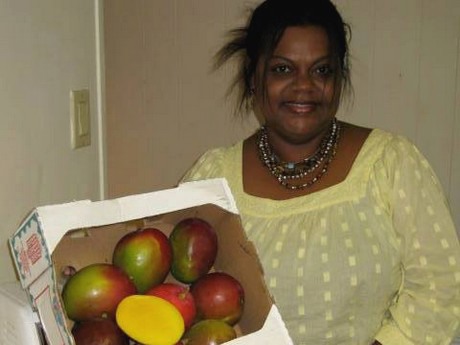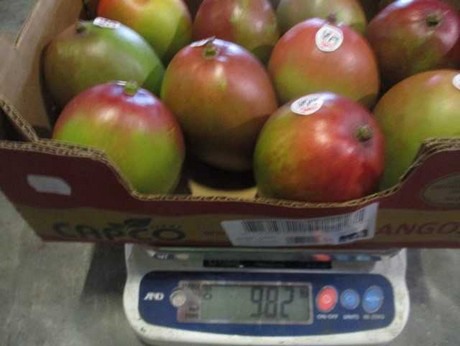The mango market in North America has tightened now that the transition is underway towards northern hemisphere sources. Importers say there has been lower than normal volume coming in from Mexico. The season has started later there as a result of persistently cooler weather during the growing season. Additionally, the Peru season is almost done, leaving supplies thin.
"Right now, we are turning a corner on the mango season," noted Sabine Henry of CAPCO Farms in Florida. "We are finishing with Peru and we have Guatemala starting along with Mexico. However, Mexico has started very slowly and as a result, the market is officially short. The weather has been much colder in Mexico. They have fruit, it's just not ready yet and it will be another two to three weeks before the we see more significant volume."
She mentioned that Peruvian shipments have reduced to between 15-20 loads per week while Guatemala has only been shipping for just over a week, with very light volumes. "With Peru, there really isn't much left and we will be totally finished in two weeks. Last week, it was reported that Guatemala had only 10 loads, but that was their first week and by next week, we should see about 40 loads."

Prices will remain strong for the next few weeks
While Mexico is still building volume, the market is expected to remain strong until a more substantial amount of fruit begins to arrive. However as Henry said, this is not likely for another two to three weeks. Once more volume comes, this is also likely to solve another issue that importers are facing - a lack of larger sized fruit.
"Prices are much higher than at this time last year," Henry observed. "Demand is up, but there is not much supply. As a result, prices out of Mexico have been between $7.50 and $8.00 for the last three weeks and in Florida, FOB prices are approaching $8.50. The only size that has sufficient supply is the smaller fruit, of which there are much more now at the beginning of the Guatemala and Mexico seasons. Right now, Peru is holding up the larger end of the market and this is helping them to see some good prices. By April, we will see more larger fruits from both Guatemala and Mexico, along with more volume which will ease the market."
Despite the tight supplies, fruit quality is looking good from all regions, with Tommy Atkins making up the majority of the fruit that is coming in at the moment. "From Mexico, we are seeing mostly Tommys and a few Kents, while 99 percent of the mangoes coming from Guatemala right now are also Tommys."

Haitian mango season also starting
Starting around the beginning of April, the Haitian mango season will also be making its appearance felt in the US. The particular variety that comes from Haiti is the Francine. Suppliers say it is favored by the Asian demographic along the East Coast and possesses similar characteristics to the Ataulfo, or Honey mango from Mexico. The Haitian season is relatively short, lasting until the end of July.
"Haitian mangoes are generally sold in the Northeast and mainly found in Asian markets and specialty retailers," Henry shared. "In fact, during the season, you will sometimes find more Haitian mangoes in those markets than more mainstream varieties. The Francine variety from Haiti is similar to the Honey mango but the difference is the Francine is always sweet. The farming practices used in Haiti to grow and pack the mango are closer to traditional methods and although not certified as such, are typically organic. Therefore, larger chains like Wholefoods tend to carry them as well. The Haitian mango season is starting in less than two weeks."
For more information:
Sabine Henry
CAPCO Farms
Ph: +1 (954) 943-2303
sabine@capcofarms.com
www.capcofarms.com
